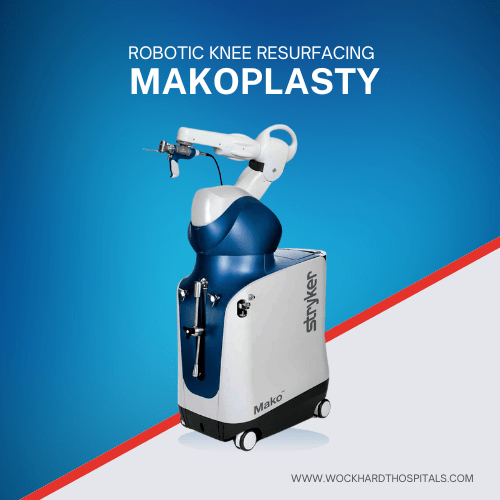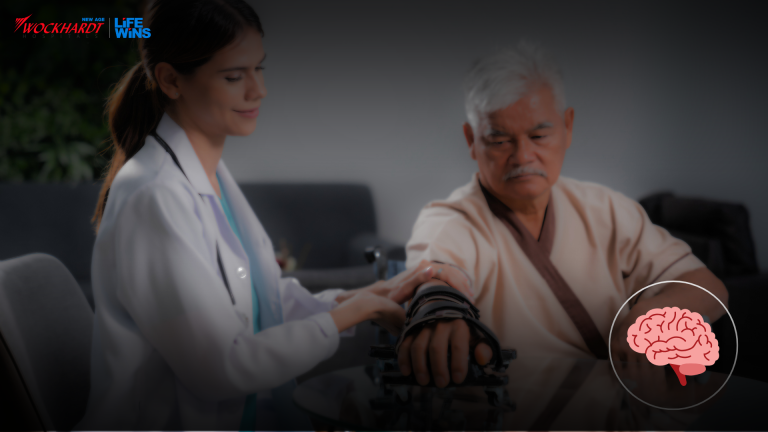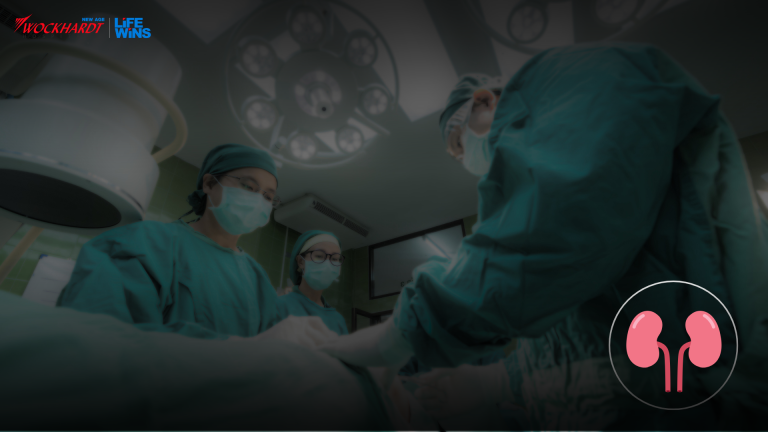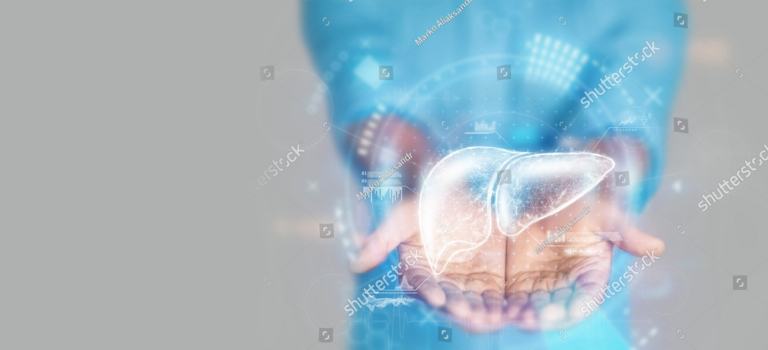15 Children were offered Free Heart Surgery at Wockhardt
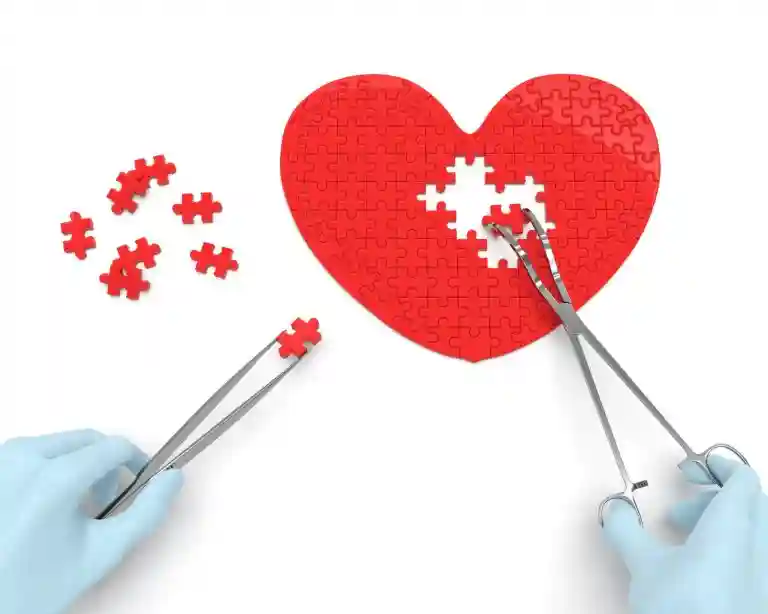
The Wockhardt Hospitals at Mumbai Central on Monday announced that it had successfully performed 15 complicated heart surgeries on children this year. The hospital has started an initiative called Little Heart where patients who cannot afford treatment are offered free surgeries. Dr. Suresh Joshi, director of the hospital’s paediatric and congenital heart centre, said, “Cardiac surgery in India is complex, and when we speak of paediatric cardiac procedures, it gets more critical. We have performed an open heart surgery on a four-hour-old baby. We are setting new clinical benchmarks every time we conduct a procedure.” The hospital felicitated Rotary International president-elect Mark Maloney at the event. Source : https://www.thehindu.com/news/cities/mumbai/15-children-undergo-heart-surgery-at-wockhardt/article25601241.ece
No silicone implants in breasts, doctors tell Australia woman who underwent operation in Thailand
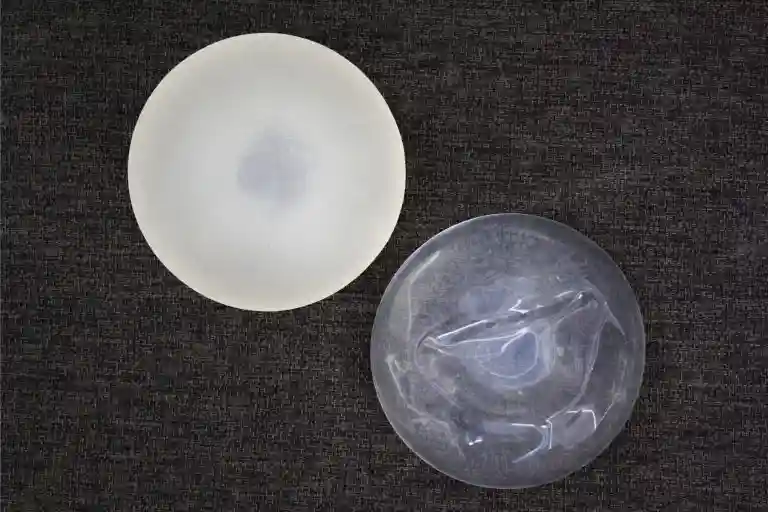
MUMBAI: In a case that highlights the perils of the cosmetic surgery industry, an Australian national who reportedly underwent a breast implant surgery in a Thailand clinic and developed side-effects thereafter, was told by city doctors—from whom she had sought a second opinion—that she didn’t have any implants. The 44-year-old woman was given silicone injections instead of an implant and had several ‘particles’ scattered across her breasts and developed nodules as well, the doctors said on Monday. “The patient is not ill, but the case proves the need for proper homework before undergoing a cosmetic procedure,” said Dr Bhagyam Nagarajan, a radiologist at Wockhardt Hospital near Mumbai Central, who diagnosed the problem and has written an article for publication in the indexed ‘Indian Journal of Case Reports’. “We want to highlight that even though this patient is educated, she didn’t do proper checks and decided to undergo ‘surgery’ at the Thai clinic because it promised implants at an attractive discounted price,” she added. Silicone injections predate silicone implants, which are essentially prosthesis to change the shape and size of a woman’s breast. The injected ‘droplets’ are supposed to amalgate within the breasts, but didn’t happen in the Australian patient’s case, said Dr Nagarajan. The patient noticed that her breasts became red, discoloured and lumpy. She tried contacting the Thai clinic, but it had closed down. She then decided to come to Mumbai for a second opinion. In April, she was also examined by breast onco-surgeon Dr Meghal Sanghvi, who found her breasts discoloured and nodular. A mammogram revealed high-density masses scattered in both breasts. “Interestingly, no implant/implant-rupture could be seen. Ultrasound showed a classic ‘snow storm appearance’ with multiple cysts and free silicone causing dense shadowing. This ‘snowstorm appearance’ is classical of free silicone causing mastopathy. The patient had been given silicone injections rather than implants, which explained the discounted rates,” said Dr Sanghvi. The patient wanted the particles removed, but doctors told her that it would entail a masectomy or a breast removal surgery. “We told her that silicone is an inert material and not carcinogenic. We have advised her to not seek any intervention,” said Dr Sanghvi. Ideally, patients should check the accreditation of the clinic before undergoing cosmetic surgery and get details of the procedure performed. Headline & Link : https://timesofindia.indiatimes.com/city/mumbai/no-silicone-implants-in-breasts-docs-tell-oz-woman-who-underwent-op-in-thai/articleshow/66977396.cms
82-year-old man first from Central India to get pacemaker implanted
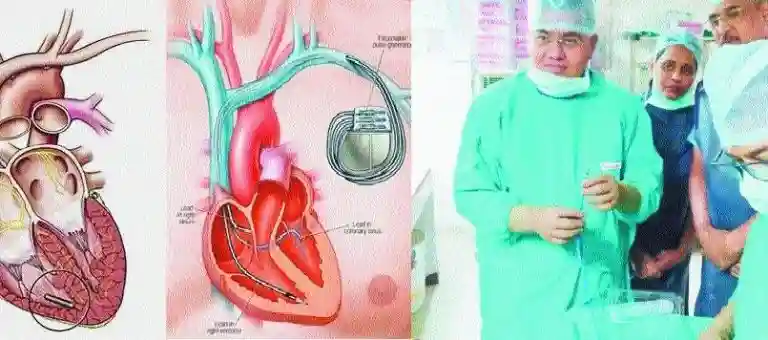
Parents of a 27-year old man from Virar, who suffered a brain haemorrhage, donated his vital organs to four critically ill patients.Dr Nitin Tiwari conducts procedure that is done first time in Central India, Senior Cardiologist in a Heart Hospitals in Nagpur performed first of its kind procedure of Central India where he implanted a leadless pacemaker in a senior citizen from Madhya Pradesh (MP). This procedure was a life saver for the patient who had run out of options to survive. The procedure is an added achievement to the long list of firsts in Central India by Wockhardt team. An 82-year-old patient had been in heart failure for several months and he required a Pacemaker to keep his heart beating. As the efforts of cardiologist at MP did not yield any result, but developed infection in chest. The patient’s relatives came to Wockhardt hospital and consulted Dr Nitin Tiwari, Senior Consultant – Interventional Cardiologist. After thorough examination, history taking and careful consideration, the patient was suggested for a leadless pacemaker (MICRA). In this instance, MICRA being a leadless pacemaker, the need for skin pocket was not there and hence the chances of pocket infection are negligible, pointed out Dr Nitin Tiwari. The miniaturised leadless pacemaker ‘MICRA’ is the world’s smallest pacemaker and is delivered directly to the heart. It is also 93% smaller than conventional pacemakers, has a mass of 1.75 gm and volume of 0.8 cc. The traditional method of pacemaker impant is done usually by creating a pocket near chest and placing a small metal container housing a battery and the electrical circuitry that regulates the rate of electrical pulses sent to your heart. One to three flexible, insulated wires are each placed in a chamber, or chambers, of your heart and deliver the electrical pulses to adjust your heart rate. Dr Tiwari pointed out, “With conventional pacemakers the risk of pocket infection varies from 1.6 to 2.2 per cent. Usually the risk is more in the second time implantation. The chances of infection are more in diabetics, young males, multiple lead pacemakers and immune-compromised people.” Dr Tiwari also advised patients to undertake pacemaker implantation preferably at a high volume centre so as to decrease the chances of infection. K Sujatha, Centre Head added, “Wockhardt Heart Hospitals has completed 15 years in Nagpur during that time it has performed more than 25,000 procedures and has seen many one of its kind procedures and surgeries. We have Cardiac specialist who have more than 20 years of experience in this field. Dr Nitin and team did excellent work.” Source : http://thehitavada.com/Encyc/2018/12/27/City-Cardiologist-implants-smallest-pacemaker-successfully.aspx Source : https://timesofindia.indiatimes.com/city/nagpur/82-yr-old-man-first-from-central-india-to-get-leadless-pacemaker-implanted/articleshow/67262971.cms
Rare Case of Cortication of Aorta Treated Successfully
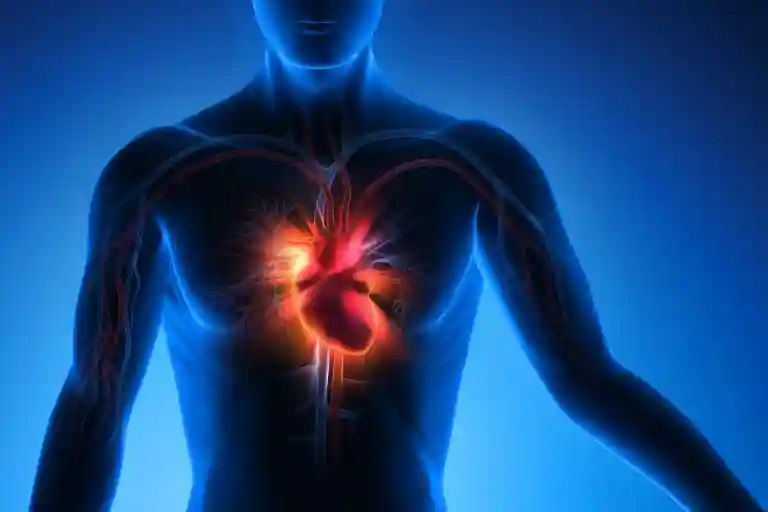
Interventional Cardiology at Wockhardt Hospitals, Nashik proves to be an advantage to Cardiac Care services. Rare case of Cortication of Aorta treated successfully. Big congratulations to Dr Vijay Sinh Patil, Interventional Cardiologist and other nursing team members of Wockhardt Hospital Nashik who proved “Life wins’.
A Minimal Invasive surgery for mitral valve in Heart
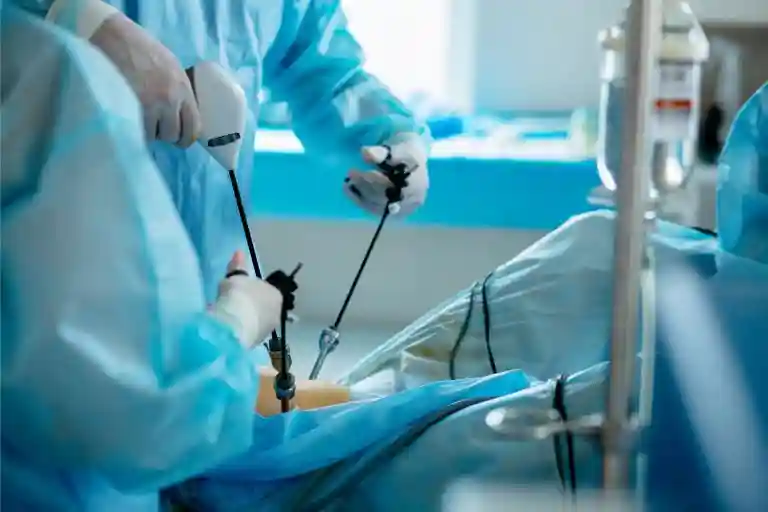
A minimal Invasive surgery for mitral valve in heart was successfully performed on 2 patients at Wockhardt Hospitals Mumbai Central. Minimal Invasive Surgery is rarely done in Mumbai but it is widely known to overall world. Mumbai: A team lead by Dr. Mangesh Kohale, Cardio Thoriac Surgeon at Wockhardt Hospital, SOBO performed a minimal invasive surgery for 2 patients; 65-year-old Ms Ridhhi Shah (Name Changed) and 56-year-old Mr. Ganesh Tare (Name Changed). Minimal Invasive Surgery is a newer form of heart surgery in India. It is a relatively new and advanced technique of performing coronary bypass for the treatment of coronary heart diseases. In this technique, the heart is approached through the side of via a small 4- 6 cm incision. This cut is placed just under the nipple. The chest is entered between the ribs without cutting any bones and by splitting the muscle. Ms. Riddhi Shah (name Changed) had a complaint of breathlessness. An 2decho was done which revealed mitral valve disease hence advised replacement treatment. Dr Mangesh Kohale and team performed minimal invasive mitral valve replacement surgery with a 6cm small incessive below right side of the chest. Whereas a 56-year-old Mr. Ganesh Tare (Name Changed) had a severe chest pain from last 2 months and critical 90% blockage of main artery. Similarly, Dr Kohale performed minimal invasive bypass surgery from left side of the chest with 6cm incision. The number of elderly patients undergoing coronary artery bypass surgery (CABG) and valve replacement continue to increase. In both the case Dr Kohale have performed minimal invasive surgery which is new in Mumbai. Minimal Invasive surgery is not for each and every patient, one has to be very choosey while selecting the patient as there is a very small area to look inside heart and regarding job done, Selection of patient is most important. As of now 15-20% routine surgery patients can be done with minimal invasive surgery later it might increase. Dr Mangesh Kohale, Cardio Thoriac Surgeon at Wockhardt Hospitals in Mumbai says “Minimally Invasive Cardiac Surgery has several advantages over the traditional technique such as the fact that no bones are cut. It has advantages in reducing pain, and a patient can live back to normal life including driving or other activities, blood loss is almost negligible eliminating blood transfusion in most and eliminating blood borne infection. This makes the procedure ideal in diabetics and older patients who have poor resistance to infection.” A cardiac surgery in India that was conventionally non-cosmetic is getting cosmetic with an incision of just 5–6 cm. All these benefits, put together, make for very short hospitalizations and recoveries. The best part is that all the blocks, irrespective of their location in the heart, can be bypassed in a safe and predictable manner.” Adds Dr Mangesh Mr. Ganesh Tare Patient says, “We are happy with minimal invasive surgery. We are back to our routine life with less pain. We are thankful to Dr. Mangesh who explained us procedure and made us understand pro and cons of surgery.” Source : http://www.newspatrolling.com/a-minimal-invasive-surgery-for-mitral-valve-in-heart-was-successfully-performed/
Critically ill Injury patient was saved at Wockhardt Hospitals
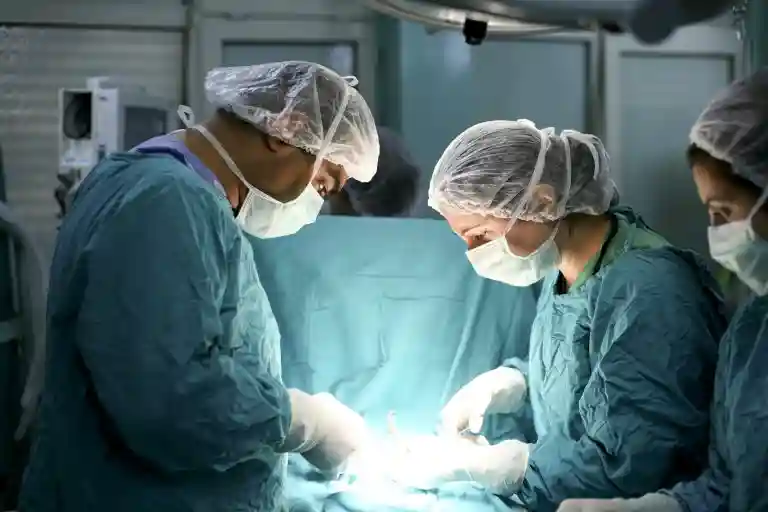
Mr Ajay Singh a 40 year old security guard fractured his hand few days was admitted in the emergency department at Wockhardt Hospitals in a poor clinical condition. He was brought on ventilator support and had also suffered traumatic head injury to his head and was in semi-comatose state. No pulse was felt in his upper arm limbs due to the injury. Dr Girish L Bhalerao an experienced orthopaedic surgeon at Mira Road Hospital examined the patient. On observation by Dr Bhalerao patient has severe injuries to his arm and skin was removed (fasciotomy). The skin had in due course turned blackish brown and showed signs of deterioration or ischemia. His fingers were dark blackish blue showing signs of reduced oxygen and blood supply to the arm. Patient’s condition was deteriorating and vitals had reached a critical level. The blood pressure was dropping, pulse was racing and he was severely dehydrated due to the extended injury caused. Blood reports showed that the kidney was shutting down. Patient was also suffering with uncontrollable diabetes, alcohol withdrawal symptoms and electrolyte imbalance. Dr Bhalerao diagnosed the patient with impending compartment syndrome due to fracture of humerus. The fracture had reduced blood circulation to the forearm and fingers. He had oedema (fluid accumulation) cyanosis (bluish discolouration) spreading to the chest area. Though patient was of poor financial status Dr Bhalerao spoke, to relatives of the serious condition of the patient and that it was now imperative that the patient be moved to the intensive care department for managing the case more effectively and prudently. Dr. Manish Hinduja and ER doctors Dr Sharad and Dr Hazel assisted Dr Bhalerao to alleviate the dropping health parameters and status of patient. However due to certain falling health parameters diagnostic investigation could not carried out as it might be risky. Doctors had to rely solely on their clinical judgment and skills to manage the patient. It was decided that the fracture site needed to be explored with surgical intervention. The next course of action due to complicated nature of the fracture he case was orthopaedic surgical intervention by Dr Girish to explore the fracture site and to determine the cause of poor blood circulation. Patient was brought in for surgery to fix the fracture and decompression of the compartment at the OT. On exploring the site Dr Girish observed that the fracture was impinging on major arterial vessels in the forearm and arm causing the occlusion of the vessels. Dr Girish not only repaired the fracture but isolated and restored the damaged neurovascular bundle. After the repair Dr Manish Hinduja assessed the blood circulation in the arteries in the arms and confirmed that the circulation was restored. Embolectomy was not required as blood flow was re-established in the limb. Within 24 hours the patient condition improved and all vital parameters including blood profile was dramatically improving. Patient’s condition was reaching a stable condition. The trauma site was recovering well. On recovering Mr Ajay was very grateful to all the team of doctors, especially Dr Bhalerao and Dr Manish at Wockhardt Hospitals. It was a complete team effort with commendable efforts put in by the emergency medical services, intensive care services and operation theatre for promptly managing the case and saving the patient’s life He also appreciated the overall management and logistic support by the hospital for his care and medical intervention.
What is Ataxia?- A Neurological condition
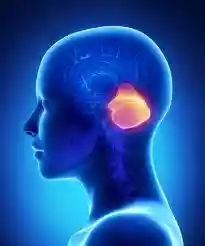
Ataxia is a degenerative disease of the nervous system. It is caused by damage to the cerebellum, the part of the brain that is responsible for coordinating movement. Another name for this disease is impaired coordination. It can affect people of all ages. Age of symptom-onset can vary widely, from childhood to late-adulthood. Generally it is described as a symptom of incoordination which can be associated with infections, injuries, other diseases, or degenerative changes in the central nervous system. This form of ataxia is different from neurological disease. Ataxia can also be associated with another medical condition, such as head injury, stroke, MS, alcoholism Complications from the disease are serious and oftentimes debilitating. Some types of Ataxia can lead to an early death. What are the symptoms of ataxia? Individuals with Ataxia often require the use of wheelchairs, walkers, and/or scooters to aid in their mobility. How is Ataxia Diagnosed? It is diagnosed using a combination of strategies that may include medical history, family history, and a complete neurological evaluation. Various blood tests may be performed to rule out other disorders. Genetic blood tests are available for some types of hereditary Ataxia. MRI and CT scans of the brain What are the types of ataxia? Sporadic ataxias: This type usually begin in adulthood and have no known family history. Hereditary ataxias: These are caused by a defect in a gene that is present from the start of a person’s life and can be either dominantly inherited or recessively inherited. Which doctor does one consult for diagnosing ataxia? This is a neurological condition therefore it is advised to consult a neurologist to determine the condition. What is the Treatment for Ataxia? The goal of this treatment is to improve the quality of life and requires an individualized approach. It is important to work closely with a neurologist to develop a plan to address symptoms. Speech and language therapy, occupational therapy, and physical therapy are common treatment options. They are sometimes used in conjunction with medication therapy to manage symptoms such as Depression, Dizziness, Vertigo, imbalance coordination, muscle cramps, neuropathy, Stiffness, Spasticity, Rigidity, Dystonia. If you are experiencing any of the following symptoms please consult our neurology department for further evaluation
Nutrition Week 1st to 7th : Eat right

National Nutrition Week is celebrated each year from 1st September to the 7th September to aware the people about important tips of their health and well-being. The role of your diet in life plays the most important role in promotion of health and wellbeing of a human being. A good and balanced diet habit improves the quality of life, as poor diet might cause morbidity and illnesses.” “It is about getting enough all of the right foods in the calories allotted plus minimizing the processed foods that are over-consumed. In our super busy worlds where high-calorie, palatable foods are both convenient and abundant, nutrition for most consumers should be more about making good food choices rather than worrying about being vitamin deficient.”…Therefore EAT RIGHT. People must be aware be aware of their food groups and balanced diet from which they can get good nutritious things. A healthy should include the whole grains, fruits, vegetables, fat-free milk or milk products, meats, fish, nuts, seeds and etc. At Wockhardt hospital out diet and nutrition department play a vital role in the providing nutritional care to patients in various disease states and conditions. Our Weight Loss Program: At Wockhardt Hospital our Endocrinology department, Diabetes and Weight Management Centre at Wockhardt Hospital treat various endocrine disorders .The division has an integrated multi-disciplinary model for providing comprehensive management of the entire range of endocrine conditions. Wockhardt Hospital also has unique weight management centre. Together with India’s only physician certified by the American Board of Obesity Medicine, our centre focuses on medical management of overweight and obesity conditions. We have a multidisciplinary team consisting of physicians, dieticians, counsellors and exercise physiologists. The protocol delivers an international evidence-based management for safe and effective weight loss. The program also works in close collaboration with surgical approaches for weight management for those patients that need it, as the Hospital is also a Centre of Excellence for Metabolic and Bariatric Surgery To know about how you can improve your diet and understand its supportive role in treating various conditions, please contact Wockhardt Hospital.
World Lymphoma Day: 15 September, 2024
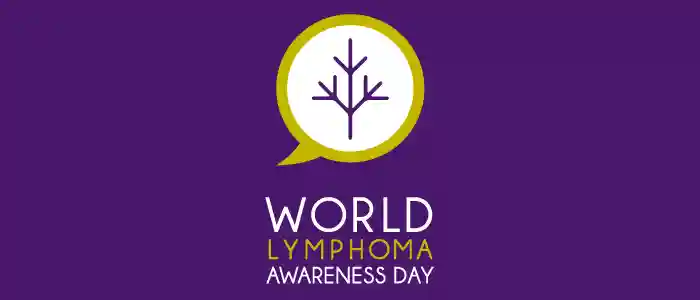
World Lymphoma Awareness Day (WLAD) is held on September 15 every year and is a day dedicated to raising awareness of lymphoma, an increasingly common form of cancer. Lymphoma is increasing in incidence and is a potentially life-threatening disease. One million people worldwide live with lymphoma and nearly 1,000 people are diagnosed with the disease every day but there continues to be very little awareness of the signs and symptoms of lymphoma. Fully Recovery of a Blood Cancer Patient at Wockhardt Hospitals, Nagpur A 55 year old gentleman had been unwell for 3 months and had variety of symptoms. He had fever fatigue and weight loss. Prior to his admission at Wockhardt Hospitals in Nagpur the patient had gone to various medical centres in and around Nagpur and was advised various investigations, but no clear diagnosis was given by any of the doctors. Finally he was admitted to Wockhardt hospitals Nagpur and was suffering with severe breathlessness and high grade fever. At the hospital the clinical experts decided to perform various Investigations which later revealed massive fluid around the heart and Lungs. The patient became critical and necessary medical attention was required to be given. He was immediately shifted to ICU and drain was inserted around lungs to decompress chest cavity to reduce the discomfort and reduce the chances of mortality. Wockhardt hospital doctors carried out required haematological investigations on the patient and discovered that the patient was suffering from a blood cancer condition called Hodgkin’s Lymphoma (A type of blood cancer). Clinical acumen and advanced haematological investigation and the Wockhardt Hospital unit was able to reveal the actual nature of the patients disease and treatment modalities were set to treat the condition of the patient. Hodgkin’s lymphoma formerly known as Hodgkin’s disease is a cancer of the lymphatic system, which is part of your immune system. It may affect people of any age, but is most common in people between 20 and 40 years old and those over 55. In this condition, cells in the lymphatic system grow abnormally and may spread beyond it. Doctors aren’t sure what causes Hodgkin’s lymphoma. But it begins when an infection-fighting cell called a lymphocyte develops a genetic mutation. The advances in medical diagnosis and treatment today have helped give people with this disease the chance for a full recover like in our case today. After the diagnosis was revealed the patient was started on Chemotherapy with all necessary supportive measures. The patient has completed his course chemotherapy and tests reveal that the patient is completely cured with no evidence of Lymphoma. After the treatment the Patient is doing well and has resumed all normal activities. The patient was grateful to prompt the diagnosis and his recovery was solely the judgement of the clinical expertise of the medical oncology team and the advanced laboratory diagnostics in haematology department set up at Wockhardt hospital Nagpur. The treatment of blood cancer required a multidisciplinary disciplinary approach blood such as diagnostics, radiation and medical oncologists, pathologists, radiologists, nuclear medicine physicians, nurses and other relevant health professionals. Like many multispecialty hospitals Wockhardt hospital offer the most advanced diagnostic technologies and treatments available for blood cancer today. The department of haematology is the branch of medicine concerned with the study, diagnosis, treatment, and prevention of diseases related to the blood. At Wockhardt Hospital the speciality is fully equipped in diagnosing the various different types of blood conditions that are looked at include anaemia, thalassemia, haemophilia, general blood clots, bleeding disorders, haematological malignancies such as lymphoma and leukaemia (cancers) as well. At Wockhardt Hospitals, we have essentially a team of highly trained specialists, nurse clinicians, physical and occupational therapists who are all equipped to provide patients with care in the field of Haematology. We use the latest in pharmaceuticals and leading-edge technologies to help you win over diseases and live a normal life. For further information and treatment please visit Wockhardt Hospital.
Kawasaki disease: A rare childhood disorder

A recent case of Kawasaki disease was treated successfully by Dr Ankit Gupta, a Paediatrician at Wockhardt Hospitals, Mira Road. The 8 month year old child presented with all the symptoms of the disease as well as complication of the heart arteries, a common occurrence of the disease. With accurate medical diagnosis and treatment, Dr Ankit Gupta along with the supportive care given by paediatric ICU department, saved the child’s life. Let’s learn more about this disease: What is Kawasaki disease? Kawasaki disease is an illness that involves the skin, mouth, and lymph nodes, and most often affects kids under age 5. The cause is unknown but with early diagnosis the disease can fully treated and child can recover within a few days. Untreated, it can lead to serious complications that can affect the heart. Kawasaki disease is most common among children of Japanese and Korean descent, but can affect all ethnic groups. What are the Signs and Symptoms? Kawasaki disease has symptoms and signs that appear in phases. The first phase: Last for up to 2 weeks, usually involves a fever that lasts for at least 5 days. Other symptoms include: The second phase, which usually begins within 2 weeks Child continues with fever, the skin on the hands and feet may begin to peel in large pieces. A child also may have joint pain, diarrhoea, vomiting, or abdominal pain. What are the complications of the disease? Doctors can manage the symptoms of Kawasaki disease if it’s caught early. Most kids will feel better within 2 days of starting treatment. If Kawasaki disease is treated within 10 days of the start of symptoms, heart disease can be prevented. Untreated cases can lead to more serious complications, such as vasculitis, an inflammation of the blood vessels. This can be particularly dangerous because it can affect the coronary arteries, which supply blood to the heart. Besides the coronary arteries, the heart muscle, lining, valves, and the outer membrane around the heart can become inflamed. Arrhythmias (changes in the normal pattern of the heartbeat) or abnormal functioning of some heart valves also can occur. What is the treatment and prognosis? Treatment should start as soon as possible, ideally within 10 days of when the fever begins. Usually, a child is treated with intravenous (IV) doses of gamma globulin (purified antibodies), an ingredient of blood that helps the body fight infection. Most children with Kawasaki disease start to get much better after a single treatment with gamma globulin, though sometimes more doses are needed. A child also might be given a high dose of aspirin to lower the risk of heart problems. Most kids recover completely, but those who develop heart problems after Kawasaki disease might need more testing and treatments with a cardiologist. To know about the disease, or if the child is presenting with above signs and symptom please visit our paediatric department at Wockhardt hospital for further management.






